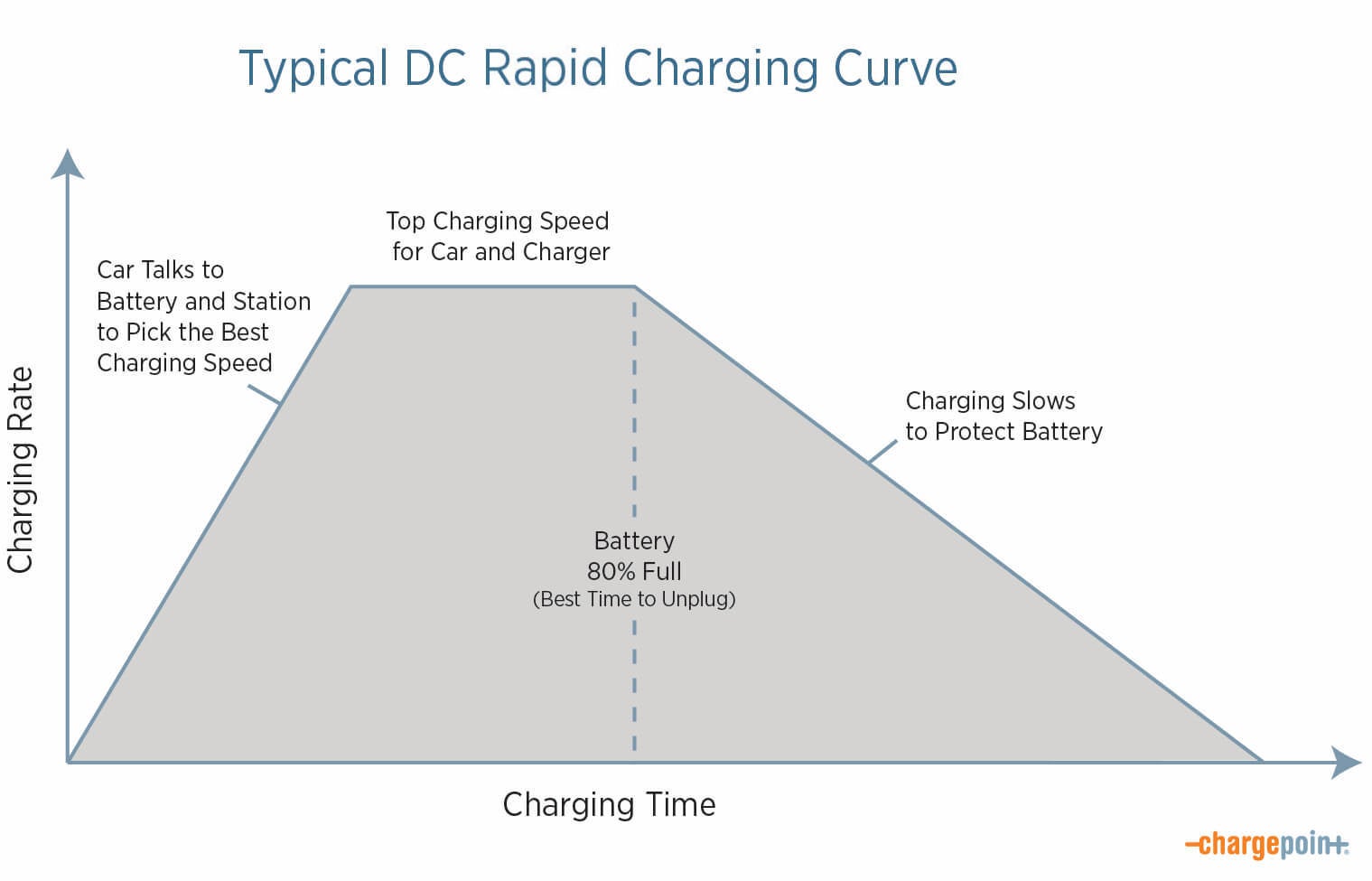
DC rapid charging is great for when you need to recharge quickly, especially for brief stops on road trips or when your battery is nearly empty and you are pressed for time. We covered when and how to use DC rapid charging stations briefly in a previous post, to help you get the best DC rapid charging experience possible. If you’ve ever used a DC rapid charging station, you may have wondered what’s controlling the charging speed and why it varies. For the sake of keeping EV drivers and station owners informed and happy, here’s a little more about what’s happening behind the scenes—or, inside the charger (and vehicle).
How do DC fast chargers protect my battery?
DC chargers have the same built-in precautions as any other EV charger: they only deliver as much power as your car can handle. From start to finish, your car is communicating with the charging station, monitoring conditions such as the vehicle’s state of charge, the maximum electrical current available from the station and the battery voltage, and regulating the power flow accordingly. Because fast charging delivers so much more power than AC charging, it’s especially important that it not send more power than the car or battery can handle.
Once charging gets started, your battery warms up and your car may ask for more power, enabling faster charging. As charging continues, your car will alert the charger when the safest top speed is reached and will continue to maintain that pace for as long as possible. Your car is actively in control throughout a fast charging session—and it may request a moderate speed to ensure safety and maximize battery life. In the long run, this is good for you, too.
Why isn’t my car always charging at top speed?
Because the car is in control, every car fast charges a little differently. Each car has a different top charging speed, such as 47 kW for the Nissan Leaf e+ and 125 kW for Teslas. That means not every car can charge as fast as every charger. Although the 350 kW rapid charging stations that have been announced are exciting and will be useful in the future, cars on the road can’t charge that fast yet.
Keep in mind that battery temperature (batteries may charge more slowly until they warm up) and ambient temperature (extreme temperatures can slow charging) affect charging speed, too. Here’s how a typical DC rapid charging session might look as charging ramps up, reaches top speed and slows down as the battery fills:

When you buy an EV, make sure to ask questions and do research about fast charging for that model so you know what to expect, from what connector to use to how long it will take to charge. This will help you have a stellar ownership experience and avoid any rapid charging surprises.
Now that you know how DC rapid charging works and where the charging curve comes in, you’re ready to get the most out of your EV. But did you know that fast isn’t always better? Learn more about the different charging speeds and discover which type is ideal for your business. We let you in on the AC / DC details in our e-book:

